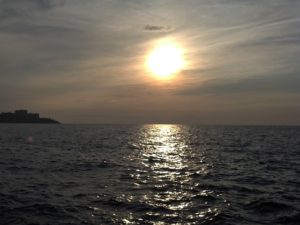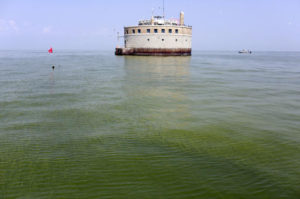Over $2 million and going strong ….

JJ Watt is raising money for Harvey’s disaster relief
To make a donation, either contribute to CleanWaterWarrior for a direct pass-through to Watt’s foundation, or click here: YouCaring.
Clean Land. Clean Water.
Success Stories
Over $2 million and going strong ….

JJ Watt is raising money for Harvey’s disaster relief
To make a donation, either contribute to CleanWaterWarrior for a direct pass-through to Watt’s foundation, or click here: YouCaring.
None of us would argue that efficiencies in agriculture — reducing costs to raise and harvest crops, and feed animals, for starters — have had a monumental and often very positive impact for consumers. Long story short: people need to be fed and, with a global strain of 6.5 billion, agriculture has come up with solid solutions for feeding the masses.
But producing efficiently is but one piece of the global agricultural puzzle. Another just as important component is conserving efficiently.

According to recent information from the USA chapter of the Union Of Concerned Scientists, the nationwide cost of farm runoff is hefty:
Water pollution from fertilizer runoff contaminates downstream drinking water supplies, requiring costly cleanup measures with an annual price tag of nearly $2 billion.
I would argue that this estimate is too low. A recent article in the Minneapolis Star-Tribune notes that the State of Ohio alone has received millions in aid to treat harmful algae bloom (HAB) activity and other agriculture pollution issues largely affecting Lake Erie.
The Great Lakes Restoration Initiative has spent millions on cleaning up beaches and restoring wetlands that filter pollutants along the lake shore. In all, Ohio has received just over $200 million in federal funding from the program since 2011.
While funding and incentives to improve land management from Federal and State government sources exist — through a variety of sources, like the US Department of Agriculture — to participate requires considerable effort, including an involved application process, on the part of farmers. If the financial incentive to implement better practices does not meet or exceed a crop-and-harvest approach, it is likely that only the most motivated (see environmentally friendly) farmers will apply.
What is needed is a strategy that rewards the farmers most economically challenged, or least concerned, to make permanent improvements to their land management practices. Depending on their location, these are the farms contributing most densely to HABs — farms which, within reason, are not necessarily of a particular size — that must be targeted for any real conservation impact to be realized.
Tracking the recent farm runoff legislation strategies in Iowa and Minnesota, it becomes clear – to the surprise of few – that attempts to formalize legislation aimed at curbing farm runoff will be met with staunch resistance.
This does not bode well for residences amongst and downstream of agricultural operations. Such operations continue to struggle with controlling the runoff they create from excessive animal manure.
A recent article by NPR (citing expert Greg Cox) discusses best

practices for reducing farm runoff. Ag runoff, as has been mentioned many times here, is the primary contributor to harmful algae blooms (HABs). As ever, best practices always include creating sizable grass buffer spaces between cropped land and waterways.
Grass which carries a clear benefit for farmers. It can (and should) be harvested to feed and bed farm animals.
Such a basic strategy makes great sense when proposed in a vacuum. But, for farmers striving to pull every bit of revenue from each acre, such an approach may not always make financial sense. And, clearly, farmers have little interest in more governmental involvement — as is presented regarding Iowa legal battles in this recent article from US News and World Report.
The push-and-pull here is inevitable, oh-so predictable, and the least productive method for solving the nationwide and global challenge of HABs.
As Spring soon rolls into the Midwest, the ugly reality of melting snow across hundreds of thousands of manure fertilized fields again manifests. And the picture is not pretty.
In recent years Lake Erie has experienced Harmful Algae Blooms (HABs) larger than the size of New York City. Most of this pollution — which comes in the form of phosphorus — empties into the Western Ohio part of the Lake via the Maumee River basin.

Since the Cuyahoga River Basin contains over 15%, or nearly 2,000,000 people, of the State of Ohio’s population, it is popular to contend that these cities are responsible for the pollution. But this argument falls flat, according to a report from LakeErieAlgae.com.
The differences in how heavy spring rainfalls affect phosphorus loads in two watersheds – the Maumee and the Cuyahoga – show the different impacts of non-point sources (like the primarily agricultural lands in the Maumee River basin) and point sources (like the urban and industrial lands in the Cuyahoga River basin, which houses nearly 15% of Ohio’s population). Both watersheds occasionally have combined sewer overflows (CSOs), but research suggests these volumes pale in comparison to the river volume during storms.
In short, the Maume River, flowing through the mostly agricultural Maumee River Basin, is responsible for the vast majority of the phosphorus pouring into Lake Erie. And this phosphorus is the key trigger to HABs.
Watch closely as Spring 2017 approaches. HABs will result no matter what but, should heavy rains accompany the annual melting of snow, record HABs will again be reported across not just Lake Erie, but throughout the USA and beyond.
This excellent report from The National Wildlife Federation (NWF) offers numerous touch points on how to curb HABs, like the below:
Summer HABs will be explained in no small part by Spring meltdown and precipitation levels.
The connection is indisputable.